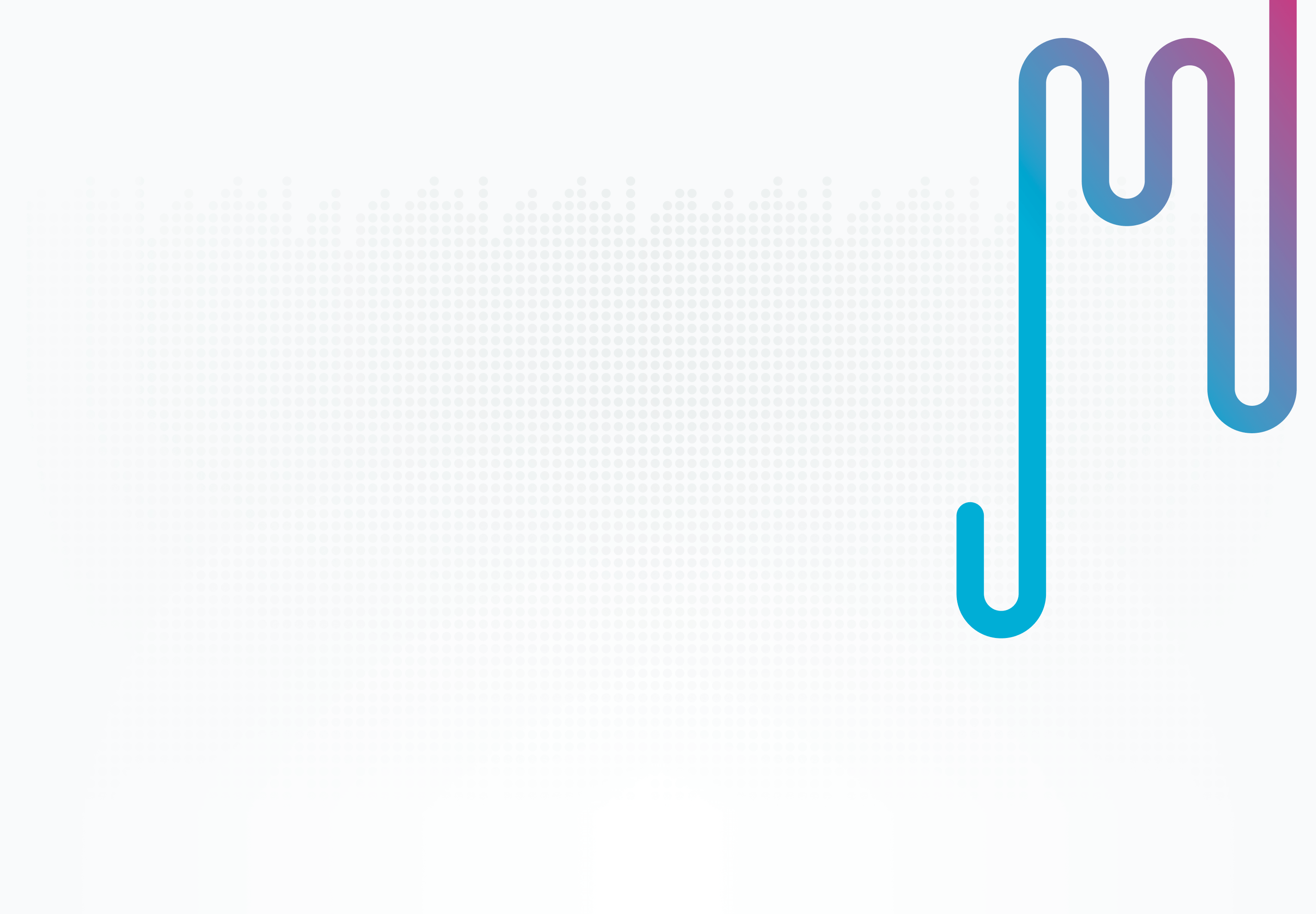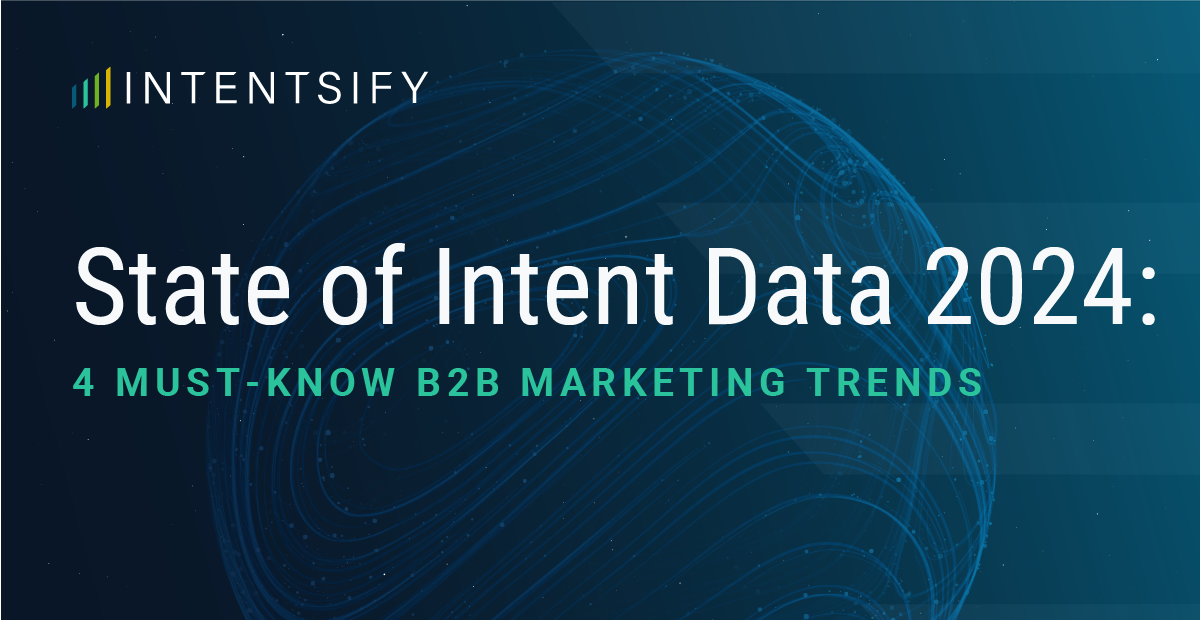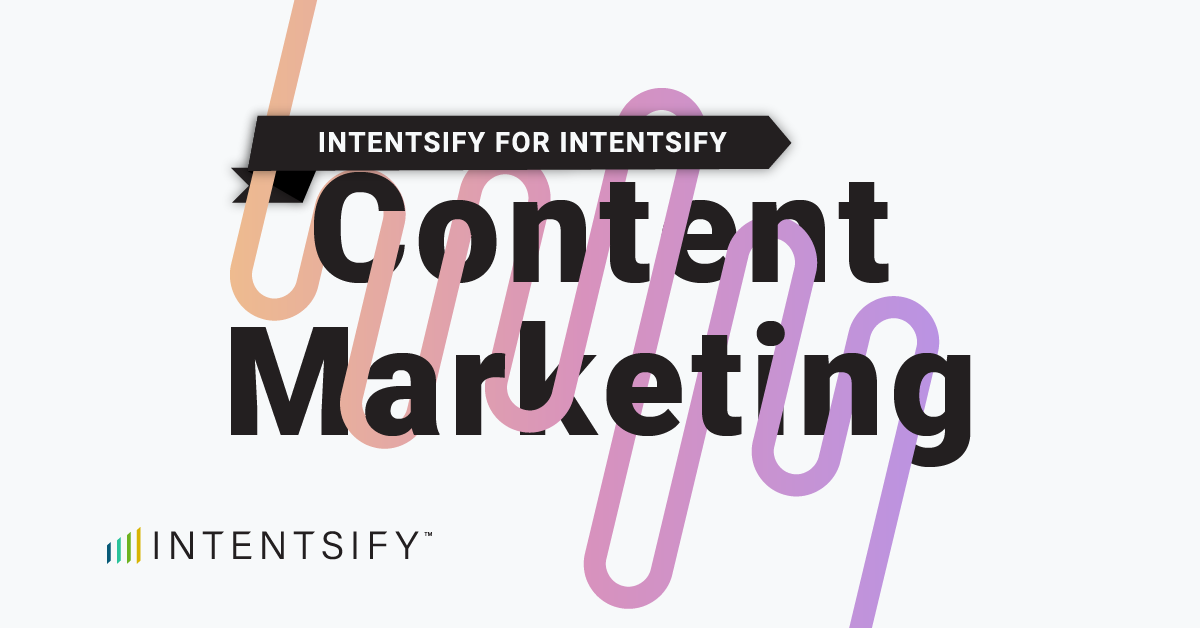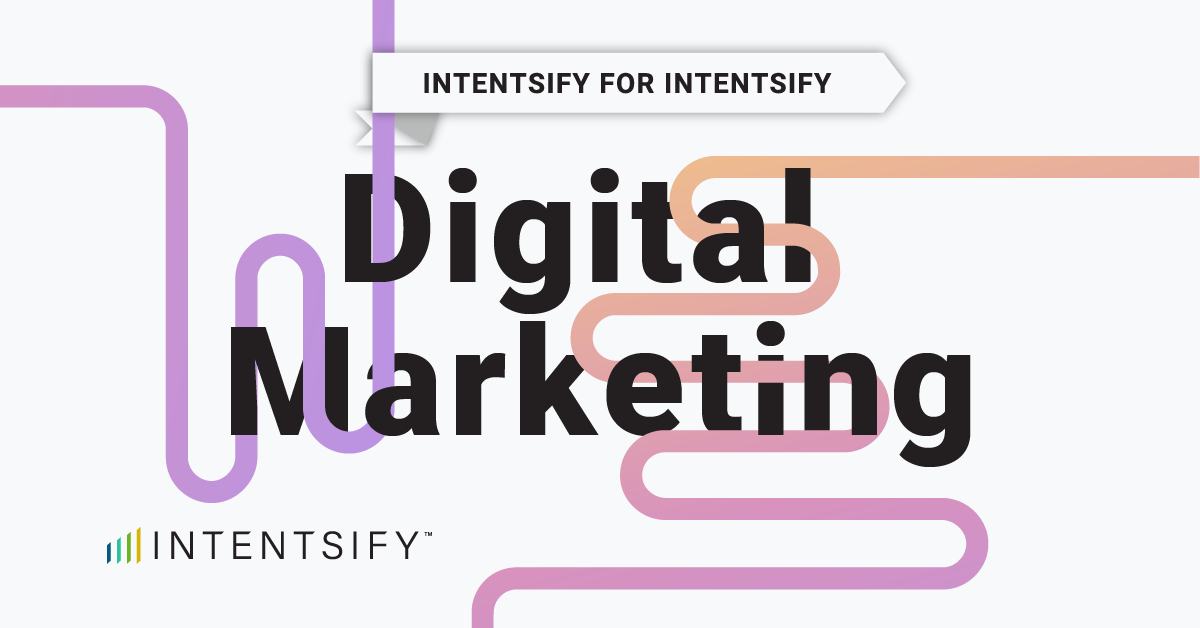What if you could stop wasting ad dollars on prospects who aren’t ready for engagement and instead focus your entire budget on accounts actively researching topics related to your solutions? Imagine cutting through the noise of digital advertising to reach key decision-makers and influencers precisely at the right time with the right message. This isn’t marketing fantasy—it’s the reality that 96% of B2B marketers are already experiencing with intent-driven digital advertising.
In fact, digital advertising has experienced unprecedented growth, transforming how smart B2B marketers connect with their target audiences. Global ad spend reached close to US$1.1 trillion in 2024, with digital channels now accounting for 72.7 percent of worldwide ad investment. But here’s the game-changer: while everyone else fights for attention with spray-and-pray tactics, savvy marketers are using intent data to target only the prospects who matter most.
What Makes Digital Advertising So Powerful?
The numbers tell a compelling story. Global digital ad spend is set to rise from $740.3 billion in 2024 to $965.6 billion by 2028, demonstrating the sustained confidence marketers have in digital channels.
But here’s a critical insight many marketers miss: digital advertising isn’t just about driving immediate conversions—it’s about providing strategic air cover that maximizes brand awareness and reach among your ideal prospects. And when combined with other tactics such as sales outreach and lead generation, it becomes even more powerful. Think of it as laying the foundation for all your other marketing efforts to succeed, resulting in higher conversions. 96% of B2B marketers have seen success when using intent data to achieve their associated goals, largely because they understand advertising’s role in the broader demand generation ecosystem.
Digital advertising combines brand awareness and demand generation tactics that leverage digital channels like programmatic display and social media to promote organizations and their products or services. When synchronized with lead generation tactics like content syndication, digital advertising creates a powerful one-two punch that keeps your brand top-of-mind while capturing active prospects.
Three Key Reasons Marketers Choose Intent—Driven Digital Advertising
1. Build Strategic Brand Awareness
Digital advertising delivers valuable brand exposure that aligns with the prospect’s unique interests and keeps your company top-of-mind, across every stage of the funnel. Instead of hoping prospects remember your brand when they’re ready to buy, intent-based targeting ensures your advertising reaches them early and consistently during their research phase, building familiarity and trust over time.
Intent data delivers improved campaign performance by helping you:
- Target the right accounts: Focus brand awareness efforts on prospects actively researching relevant topics, categories and solutions
- Time your messaging: Deliver relevant content during critical research phases
- Create familiarity: Build trust and recognition that pays dividends when prospects enter active buying cycles
- Support other tactics: Make your content syndication, email campaigns, and sales outreach more effective by ensuring prospects already know your brand
2. Deliver an Improved Buyer Experience
The most sophisticated marketers leverage intent data to make sure their timing and outreach is on-target based on where each prospect is in the buyer’s journey, ensuring they make the most out of every advertising dollar.
They also don’t run digital advertising in isolation—they synchronize it with supporting demand generation activities for maximum impact and a more consistent buyer experience. When prospects see your ads consistently while also encountering your content through other channels, the combined effect creates powerful brand reinforcement.
This synchronized approach delivers many benefits:
- Increased content engagement: Prospects who recognize your brand from advertising are more likely to download content
- Higher lead quality: Brand-familiarity tends to result in more qualified leads
- Faster sales cycles: Prospects who’ve seen consistent brand messaging move through the funnel more quickly
- Better campaign attribution: Coordinated campaigns provide clearer insights into what’s driving results
And when marketers leverage a synchronized multi-channel strategy that unifies their digital advertising and lead generation efforts, they see powerful results:
- 25% lift in message association
- 9% increase in accounts with active intent signals
- 51% jump in clickthrough rates
- 31% boost in lead quality
- 20% improvement in conversion rates
3. Scale Return on Media Investment
Intent data helps you maximize every advertising dollar, but the key is understanding that ROI comes from both short-term conversions and long-term brand building. The most effective programs combine:
- Signal Relevance: Generic intent signals miss the nuances of your exact offerings—what makes them special and which accounts are the right fit. The most savvy marketers leverage custom models that surface intent signals most relevant to their unique products and services—ensuring add reach prospects with the greatest likelihood to engage.
- Signal Diversification: The breadth and depth of intent signals matter enormously. Organizations that leverage diverse data sources—from content consumption to advertising engagement to social interactions—gain a more comprehensive view of prospect interest and timing.
- Coordinated Campaign Optimization: Rather than optimizing ads for immediate clicks alone, successful marketers also optimize for:
- Brand awareness metrics including impressions and account reach
- Content syndication performance improvements regarding content consumption
- Buyer research stage progression to analyze the impact of campaigns on each account’s readiness to buy
- Sales-accepted lead increases delivering more qualified prospects
- Pipeline velocity gains from brand-familiar prospects
Who’s Leading the Digital Advertising Charge?
Marketing Takes the Lead
While sales, customer success, and marketing teams all benefit from intent-driven digital advertising, marketing departments are the primary drivers of these initiatives. They focus on:
- Digital marketing campaigns: Creating targeted display ads, social media campaigns, and search advertising to build awareness
- Demand generation: Driving interest among target accounts research relevant topics, categories and solutions
The Strategic Funnel Approach
Intent-driven digital advertising can be used to support a full-funnel engagement strategy to help drive target accounts further into the buyer’s journey:
- Top of Funnel (TOFU): Generate awareness among accounts showing early buying signals
- Middle of Funnel (MOFU): Nurture prospects who are actively researching solutions
- Bottom of Funnel (BOFU): Convert high-intent prospects into customers
Overcoming the #1 Digital Advertising Challenge
“Reaching target audiences through digital channels” is one of the most critical challenges (32%) among B2B marketers. Intent data directly addresses this challenge by providing:
- Behavioral Insights: Understand what your target accounts are actually researching
- Timing Intelligence: Know when prospects are actively in the market
- Content Guidance: Serve ads that align with prospects’ current research activities to break through the noise and stand out from other advertisers
Preparing for Launch: Your Intent-Driven Digital Advertising Action Plan
Week 1-2: Foundation Setting
- Audit current campaigns: Identify which campaigns would benefit most from intent targeting
- Select intent data sources: Choose providers that align with your ideal customer profile
- Set up tracking: Implement proper attribution to measure intent campaign performance
Week 3-4: Campaign Launch
- Create intent-targeted audiences in your advertising platforms
- Develop relevant creative assets that speak to current research topics
- Launch pilot campaigns with modest budgets to test effectiveness
Month 2-3: Optimization and Scale
- Analyze performance data comparing intent vs. non-intent campaigns
- Refine targeting parameters based on which intent topics drive best results
- Scale successful campaigns and expand to additional channels
How to Implement Intent-Driven Digital Advertising
Step 1: Set Up Your Intent Models
The highest-performing campaigns are fueled by advanced intent models that identify target accounts and personas with research behaviors that map to your specific solutions and positioning:
- Use AI to analyze your content and automatically monitor research behaviors and content consumption patterns that align most with your business
- Leverage diverse data sources to capture the full spectrum of prospect research activities
- Refine your target account list continuously based on the audience criteria that correlates most with your ICP and closed-won business
Step 2: Refine Your Advertising Strategy
Start by integrating intent signals into your existing advertising channels:
- Review intent signals to identify where accounts are in their research journey (not just active buy-cycles)
- Serve brand awareness creative to early-stage accounts to build familiarity early on and position your brand as a thought leader
- Deliver middle- and late-stage content to accounts that are actively exploring your product category or vendor-shopping to generate demand
- Coordinate timing with content syndication and other lead generation programs
This layered approach ensures you’re building brand equity with early researchers while capturing demand from active buyers.
Step 3: Synchronize Your Channels
Take your campaigns to the next level by coordinating digital advertising with lead generation tactics:
- Sync messaging themes between display ads and syndicated content by using the same data to drive targeting and delivery for both programs
- Continuously align creatives to intent signals to ensure it evolves with your prospects’ changing research and engagement signals
- Sequence touchpoints so prospects see ads before encountering your content programs
- Track cross-channel engagement: Monitor how advertising exposure affects KPIs like content downloads and email opens
- Optimize for brand lift rather than just click-through rates
The Growing Investment in Intent-Driven Advertising
The market is clearly moving toward intent-based approaches. Two-thirds (65%) of marketing professionals say they plan to invest more in intent data this year. Additionally, 77% of B2B marketers in the US expect the importance of intent data to increase in the next two years.
This trend is driven by proven results. 97% of B2B marketers believe that intent data gives brands a competitive advantage, making it clear that this isn’t just a passing fad-it’s the future of B2B digital advertising.
Measuring Success: Key Metrics to Track
Brand Awareness Metrics
- Impressions, account reach and account lift among your target account list
- Assisted conversions from content syndication and other lead generation programs
- Brand recall improvements in sales conversations
Pipeline & Lead Generation Metrics
- Content syndication performance improvements for accounts exposed to advertising
- Lead quality scores from coordinated vs. advertising-only campaigns
- Sales-accepted lead rates from multi-channel programs
- Pipeline velocity improvements from brand-familiar prospects
Advanced Attribution Metrics
- Cross-channel engagement patterns showing advertising’s influence on other engagement behaviors
- Intent signal progression tracking how advertising exposure affects research behavior
- Customer acquisition cost improvements from coordinated air cover programs
- Long-term brand equity measures among key account segments
Advanced Strategies for 2025 and Beyond
AI-Powered Intent Optimization
33% of companies use AI, and 84% said it has helped them understand their customers’ intentions. Combine artificial intelligence with intent data for:
- Signal relevance and focus: Eliminate the noise by honing in on the intent signals that give you the highest chances of converting prospects
- Predictive audience modeling: Identify lookalike accounts with similar buying signals
- Campaign optimization: Easily adjust ad messaging based on the latest research signals
- Real-time bidding improvements: Bid more aggressively on high-intent audiences
Multi-Channel Integration
52% of marketers use intent data to deliver targeted content, 47% for email marketing, and 44% for personalization. Expand beyond traditional display advertising:
- Social media targeting: Use intent signals to improve LinkedIn and Facebook campaigns
- Video advertising: Create video content that addresses specific research themes
- Lead generation: Expand your touchpoints to deliver relevant messaging through content syndication channels
- Sales engagement: Leverage intent signals and insights to tailor talk tracks and sales tactics to drive higher engagement and increase pipeline velocity
Account-Based Advertising Excellence
91% of marketers say they’re using intent data/scoring within ABM to prioritize their accounts. Develop sophisticated account-based strategies:
- Coordinated campaigns: Align advertising with sales outreach timing
- Stakeholder mapping: Target multiple decision-makers and influencers within high-intent buying groups to increase account penetration
- Progressive messaging: Deliver different messages based on where accounts and personas are in their research journey
The Future of Intent-Driven Digital Advertising
As we look ahead, several trends will shape the evolution of intent-driven digital advertising:
- Privacy-First Approaches: With increasing data privacy regulations, intent data provides a compliant way to target prospects based on genuine interest rather than invasive tracking.
- Real-Time Optimization: Advanced platforms will automatically adjust campaigns based on changing intent signals, ensuring your ads always reach prospects at the optimal moment.
- Cross-Channel Orchestration: Intent data will power seamless experiences across all digital touchpoints, from initial ad exposure through website personalization and email nurturing.
Conclusion: Your Competitive Advantage Awaits
Digital advertising powered by intent data isn’t just an incremental improvement—it’s a fundamental transformation in how B2B marketers can reach and engage their ideal prospects. With digital advertising spending continuing to grow at 10.3 percent year-over-year, those who master intent-driven approaches will capture disproportionate share of this expanding market.
The evidence is clear: 98% of B2B marketers say intent data is essential for demand generation. As competition intensifies and advertising costs continue rising, intent data provides the precision targeting and efficiency improvements you need to maximize your return on investment.
Start with digital advertising and lead generation as your entry points into intent data, then expand into more sophisticated applications as you see results. Your prospects are already researching solutions like yours—intent-driven digital advertising ensures you’re there when they’re ready to engage.
Ready to transform your digital advertising results? Begin by identifying accounts showing intent signals for your solutions, create targeted multi-channel campaigns that speak to their current research activities, and watch your conversion rates and pipeline quality improve dramatically.
The future of B2B digital advertising is intent-driven. The question isn’t whether you should adopt this approach—it’s how quickly you can implement it to gain competitive advantage in your market.






